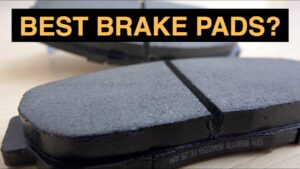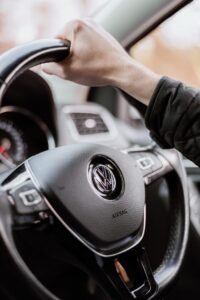Brakes are one of the most important parts of your car or any vehicle. Sure, having a good accelerator is great, but what is the use of your car, if it does not have good brakes that will properly stop the car when you need it to? Any issue with the brake is a serious threat to your safety and getting it fixed as soon as possible should be your priority.
Spongy brakes also called mushy or squishy brakes are one such issue and they can cause serious trouble to you, if not fixed immediately. Is your brake still soft after bleeding? This article will run you through the potential causes of such an issue so read on!
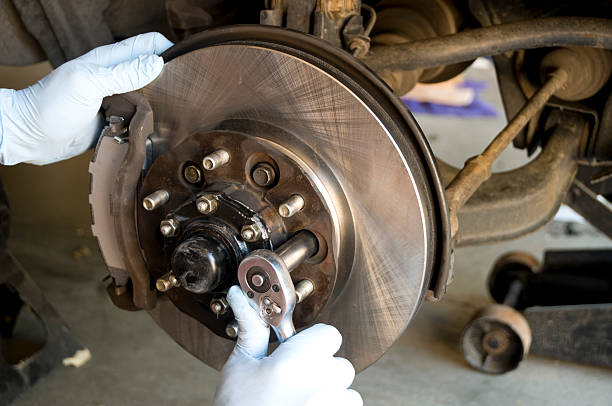
Table of Contents
Why Is My Brake Still Soft After Bleeding?
One of the important reasons why your brake gets soft is because of the formation of air bubbles inside them. But if your brake is still soft after bleeding, that can be a cause of frustration. Some reasons why this issue happens are
1. Your Bleeding Brake Technique
You may be someone who did the brake bleeding technique for the first time. Otherwise too, this is not something we do every day so errors can happen while you bleed brakes. So, if you still feel that your brake is soft after bleeding, then checking your technique for errors may be helpful.
You may already be aware of what bleeding brakes are. It is the technique used to free the trapped air bubbles from the hydraulic system. If your brakes are not bled on recommended intervals, your brake pedal will feel spongy. Here are the most common techniques you can adopt to successfully bleed your brake
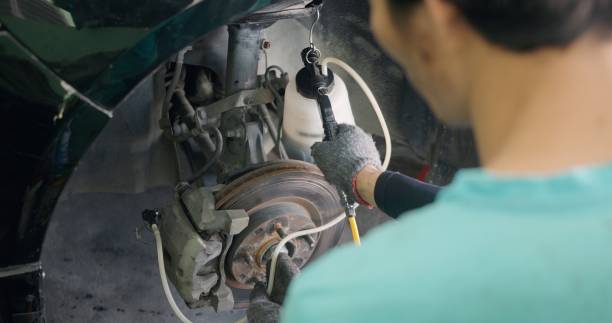
a. Vacuum Method
As the name suggests, this technique uses a vacuum to push out the trapped air. This is a very simple process that you can do on your own. The tools that you require for this process are
- Hand-held vacuum pump
- Brake fluid new
- Floor jack
- Jack stand
- Lug wrench
- Line wrench (10mm or 11mm)
- Shop towels
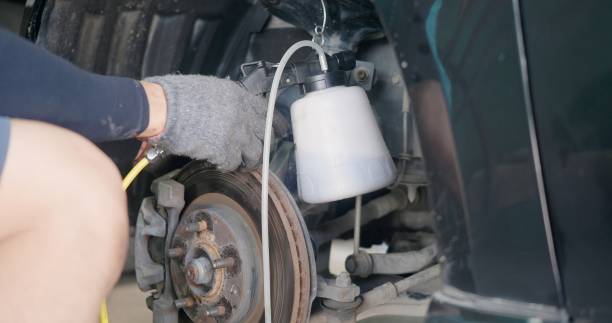
Steps To Follow
- Set the cap aside after removing it and top up the fluid reservoir.
- Attach the vacuum pump’s hose to the brake calliper or wheel cylinder bleed nipple.
- To avoid air bubbles entering the system through the bleed nipple threads, apply grease on them.
- Now apply vacuum to the system after opening the bleed nipple.
- Don’t forget to regularly top up the fluid reservoir.
- Once the hose runs free of air, close the bleed nipple while under vacuum.
b. Gravity Method
This method is usually less preferred because it is time-consuming and the seals of the master cylinder can damage while pumping the brakes. But we still will discuss it here, in case this is the method you used to bleed your brake. The tools you will need for the method are
- Fresh fluid
- Wrenches 8, 10 or 11mm usually
- Brake bleeding bottle and clear hose
Steps To Follow
- Set the cap aside after removing it and top up the fluid reservoir.
- Fill around a quarter of the bottle with fresh fluid then drown the bottom of the hose below the fluid.
- Attach the bleeding hose to the brake calliper or wheel cylinder bleed nipple.
- To avoid air bubbles entering the system through the bleed nipple threads, apply grease on them.
- Now allow the fluid to gravity bleed to the system after opening the bleed nipple.
- Don’t forget to regularly top up the fluid reservoir.
- Once the hose runs free from air, close the bleed nipple.
c. Pump And Release Method
This is the most common method used to bleed brakes, even though this requires you to have a handyman to complete the technique. You will need a person to build the brake system pressure and another to release the fluid for this method.
The tools you require to execute the process is
- Fresh fluid
- Wrench’s 8, 10 or 11mm usually
- Fluid bottle and clear hose
Steps To Follow
- Set the cap aside after removing it and top up the fluid reservoir.
- Fill around a quarter of the bottle with fresh fluid then drown the bottom of the hose below the fluid.
- Attach the bleeding hose to the brake calliper or wheel cylinder bleed nipple.
- To avoid air bubbles entering the system through the bleed nipple threads, apply grease on them.
- One person should be instructed to pump the brakes a lot of times and then hold the pedal down.
- The other person should now release the bleed nipple and also fluid pressure together with the trapped air.
- Don’t forget to regularly top up the fluid reservoir.
- Once the hose runs free from air, close the bleed nipple.
It’s better to avoid using this technique for older vehicles that lack regular field maintenance.
2. Contaminated Fluid
Having a good quantity of brake fluid is of course important and the quality is also as important as this. The main reason for the condition, the brake still soft after bleeding, is because the quality of the brake fluid is compromised. The brake fluid heating inside the brake calliper is common and this is not a problem when the fluid is not contaminated. Otherwise, the moisture content in the fluid becomes steam, making the brakes soft.
The only way to fix this condition is by changing the brake fluid. This can either be done yourself or take your car to a mechanic to get the fluid replaced.
3. System Leak
Since your hydraulic system functions under pressure, a leak is very common. Finding this leak also cannot be that hard as oil patches start appearing under or around the brake pedals of your car. This issue can also keep your brake still soft after bleeding.
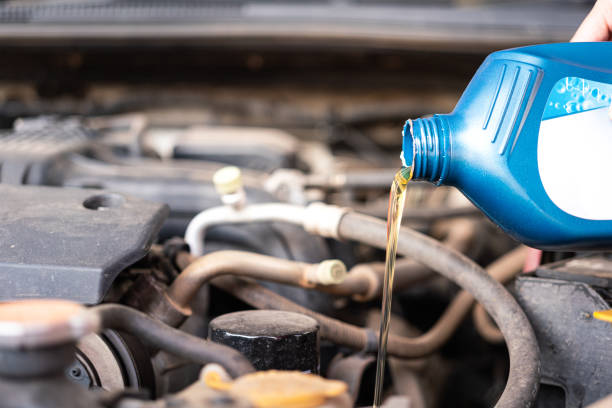
4. Faulty Brake Hose
Another reason for your brake to stay soft is a broken or faulty brake hose. You can fix this issue by just replacing the hose. It’s better to take your car to a mechanic to fix the issue but you also can do it on your own.
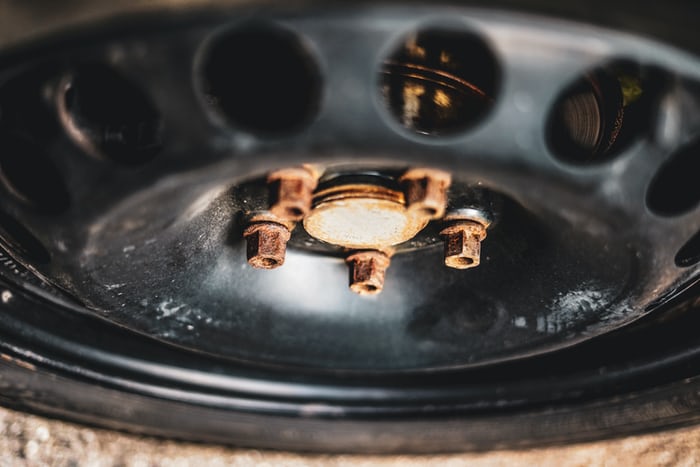
Frequently Asked Questions:
So, here are some of the frequently asked questions about why do my brakes not work after bleeding them, do you bleed brakes with cap in or off etc?-

Why Do I Have No Brake Pressure After Bleeding Brakes?
There could be many reasons like you have no brake pressure after bleeding your brakes: Brake fluid leak in the system (check your fluid level. Faulty seal in the master cylinder.
Why Do My Brakes Not Work After Bleeding Them?
This condition can be due to the piston sticking in the bore of the master cylinder during the bleeding process when the brake system gets blessed. So, the subsequent efforts to get a satisfactory brake pedal will fail.
Why Do I Have To Press My Brake Pedal So Far?
One of the main reasons for your brakes touching the floor would be a problem occurring with your brake fluid. When Air reaches the brake line that prevents the fluid from flowing properly, which results in a spongy pedal. A bad brake booster is another common cause of a malfunctioning pedal.
Do I Have To Bleed All 4 Brakes If I Replace One Caliper?
All four brake lines after opening any one brake line. If the brake line you open is independent, then you don’t have to bleed all 4 brakes.
Do You Bleed Brakes With Cap On Or Off?
During bleeding of Brakes, the master-cylinder cap should still be in place atop the reservoir. Each brake must be bled in the correct sequence. You bleed the brake most distant from the master cylinder first.
How Do You Know If You Have Air In your Brake Lines?
- One of the most obvious signs that you have air in the brake lines is that the brake pedal will feel spongy.
- Ineffective Brakes and a loose brake pedal.
Conclusion
Your brakes will most probably return to normal when you bleed. However if the condition, brake still soft after bleeding, happens to you, then revisiting the method you used to bleed is the best way to find what you did wrong. Hope this article helped you with that and also to understand what other reasons can make this problem persist.

